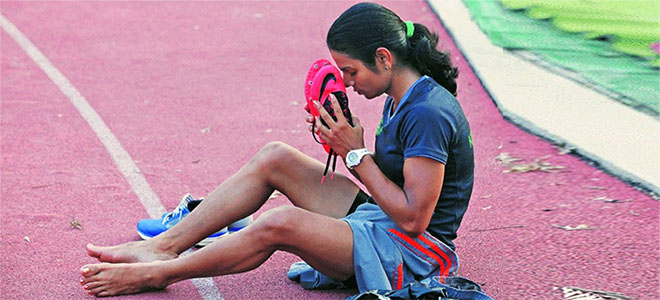Dutee Chand, Science and the Spirit of Sport: Why IAAF Policy is Deeply Flawed
by Roger Pielke, Jr.
Sporting Intelligence
October 20, 2014
ince 1928 international athletics has included separate categories for men and women. This separation makes sense to most people on a lot of levels. In terms of social equity, it is appropriate that women have the same chance as men to compete at the highest levels of athletic competition, even though full equality is not always realized in practice.
In terms of biology, women are in general smaller and weaker than men, so having a mixed competition would lead to virtually no women competing in athletics. Most of the time, separating women and men in athletic competition works well. But when questions arise about who is and who is not eligible to participate in women’s events, things get messy. And as the popular legal maxim has it, hard cases make for bad law.
The latest controversy over participation in women’s athletics involves an Indian sprinter, Dutee Chand. She has run afoul of policies recently implemented by the International Association of Athletics Federations (IAAF) for determining eligibility to participate in women’s athletics. The IAAF oversees track and field competitions under the Olympic movement. Despite IAAF protests to the contrary, these policies are the most recent incarnation of “sex testing,” used to classify individuals as male or female for purposes of competition.
Chand has what doctors call hyperandrogenism, which means that her body naturally produces an excess of androgens, such as testosterone. About five to 10 per cent of women of reproductive age are estimated to have an androgen excess.
The IAAF determined in 2011, prior to the London Olympics, that it would use an athlete’s androgens, focused on her level of testosterone, as the primary factor for determining eligibility for participating in women’s athletics events. It implemented this policy after its poor handling of the case of Caster Semenya, a South African sprinter who fell victim to the IAAF’s lack of clear policy for participation in women’ events. She suffered degrading treatment by athletics officials and in the media, before the IAAF finally ruled her eligible to compete.
The IAAF put forward its androgen (testosterone) policy apparently in hope of establishing an unambiguous, scientific standard for determining eligibility to participate in women’s athletics events. In many areas of decision making we would love for science to offer us bright lines to separate one side from another.
The use of biological characteristics to differentiate among athletes is widely practiced and accepted. My city recreation department includes a basketball league for those 6 foot and under and also a soccer league for players who are over 40 years old. Elite athletes now can compete in “masters” events broken down by age. Olympic weightlifters and wrestlers are organized by body weight. Professional cyclists have upper limits on their hematocrit levels.
However, biological sex does not fall neatly into two unambiguous categories, but along a spectrum characterized by shades of grey. The World Health Organization explains, “there is a range of chromosome complements, hormone balances, and phenotypic variations that determine sex.” As David Epstein writes in The Sports Gene, “neither body parts nor the chromosomes within them unequivocally differentiate male from female athletes.” Science cannot draw a bright line between male and female, because there is no such line.
The IAAF androgen policy would be perfectly acceptable if there was a general consensus on naturally occurring testosterone as a relevant physical characteristic to separate athletes into different competition classes. After all, the logic behind separating out athletes by age, weight and blood oxygen levels is fairly obvious. But there is no such consensus on testosterone. Read more …


